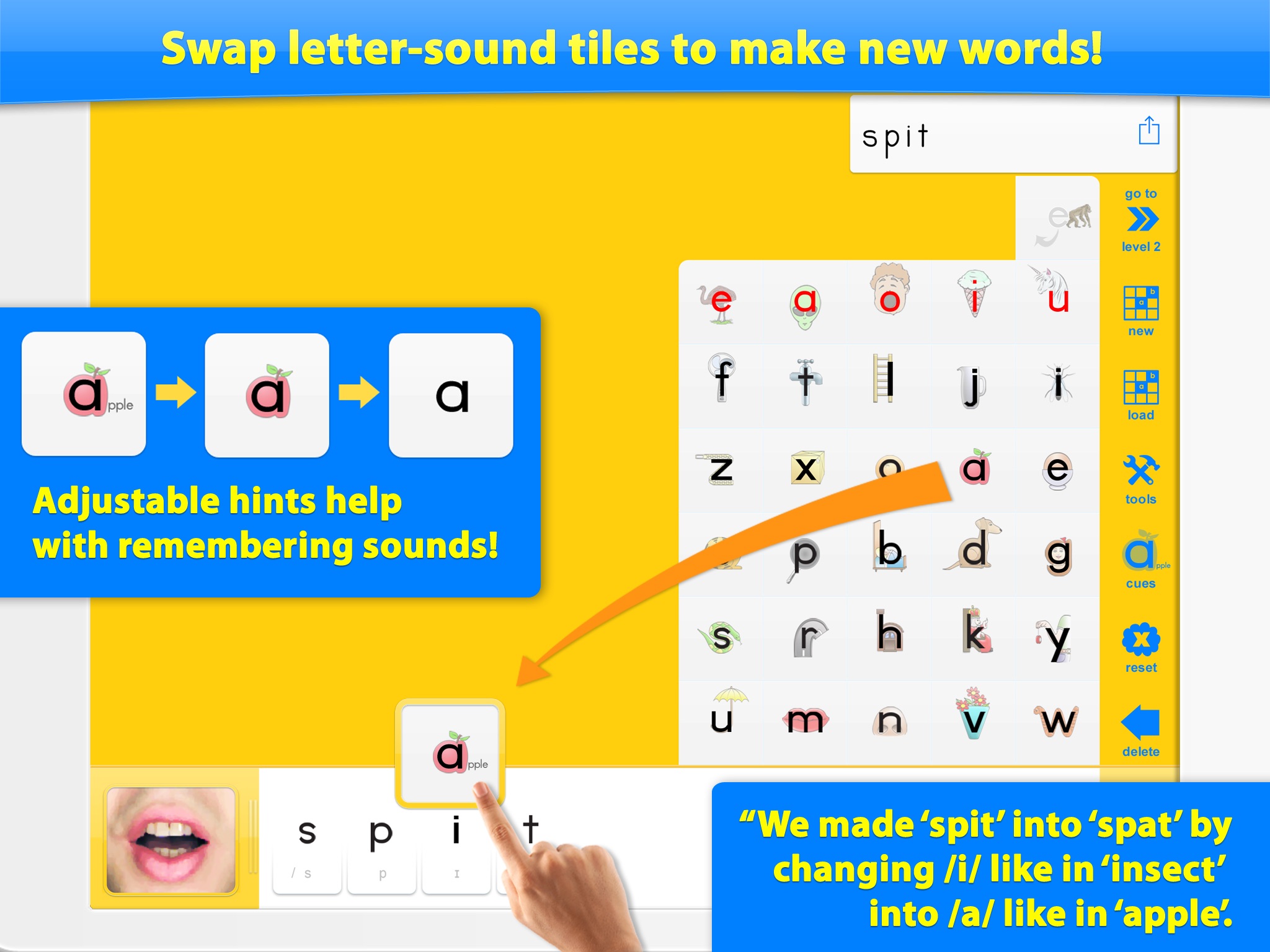
Word Builder - The Phonics Teaching Tool app for iPhone and iPad
Developer: Reading Doctor Pty Ltd
First release : 15 Jun 2013
App size: 49.56 Mb
Word Builder™ is a must-have tool for anybody who is teaching phonics!
Created by speech-language pathologist Dr. Bartek Rajkowski, PhD, Word Builder™ is a scientifically based, fun, intuitive means through which to learn how to use letter-sound patterns to crack the code in the English language. The app is perfect for teaching beginning readers, students with reading difficulties and students learning English as a second language.
"Word Builder is the best program I have seen that enables students to play with sounds and hear the word it makes. They can manipulate the sounds within a word, make rhyming words, play with nonsense words and be told whether it is a real word or not. The scaffolding built into the program means students can be working at a task appropriate to their level of learning with very little assistance. An added bonus is that the Jolly Phonics letter groups are already built into the program. This app is an excellent way to give those beginning in English literacy at any age a tool to really help boost confidence and skill. Well worth the money!"
- Jan Polkinghorne, SPELD phonics trainer
PLEASE NOTE:
- Requires iPad 2 or higher
- Includes Australian, North American and British English accents.
- Although students enjoy using WordBuilder™, it is a serious teaching tool, not a game! It does not read or spell words for students but makes it easier to teach students to read and spell words for themselves!
- Wordbuilder™ is best used in parallel with a synthetic phonics program such as Jolly Phonics, MULTILIT or Letters & Sounds.
- If you would like advice about how best to use the app, please see our website or contact us!
Which skills does Word Builder™ help you to teach?
Research shows that we read unfamiliar words by converting letter patterns to speech sounds and then mentally joining the sounds to read the word. Competent readers self-teach by successfully decoding new words, while poor letter-sound knowledge and decoding ability are hallmarks of reading difficulties. This code-cracking skill has been shown through decades of research to be crucial in learning to read and spell.
WordBuilder™ helps you to teach students code-cracking skills found through research to be vital in learning to read and write in English.
How do parents, teachers and reading specialists use Word Builder™ to help students?
- build words with letter-sound tiles for the student to read, or say a word for the student to build
- change which letter-sound tiles are available so that beginning students can practice with the most basic building blocks of written language while more advanced readers can learn less common patterns
- save your own letter-sound tile sets (corresponding to your phonics program or your students needs)
- an in-built memory-aid system helps students to remember letter-sound relationships. It can be adjusted to the level of help required by the student.
- swap and remove letter-sound patterns from words
- write irregular words by changing sounds while keeping letter patterns the same (so you can write words like said and who)
- insert blank tiles, syllable markers and apostrophes in words
- save images of the words you create and create lists using the notes app
- share the words you create via email, Facebook, Twitter, Airdrop and more!
How do students use Word Builder™?
Word Builder™ gives students an easy way to experiment with making and reading words using the most common letter-sound patterns in English. Students can:
- tap on letter-sound patterns to hear the speech sounds they represent
- make words by combining these patterns
- slide a finger over the patterns in a word to hear the individual speech sounds in the word
- see an animation of a mouth which explicitly teaches students about the relationship between speech and written language
- move and replace letter-sound patterns by dragging and dropping them
- check to see if words they have made are correctly spelled



